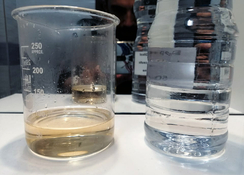Alain Deloc
Member
It's there to control the pH and form a buffer with borax. As the products of development happen, this will prevent the pH of the solution from drifting. So however it's formed, you want to have a pH about the right number, and enough boric acid and borax to buffer it around that pH so it stays there.
The pH will have the biggest effect on grain and development time. It shouldn't affect too much in the narrow range we're talking about here.
If you are within 0.25 of where it's supposed to be, it will probably be fine. I don't know what pH it's *supposed* to be, but I plugged the numbers into a buffer calculator and get around 9 for those. That seems to be in line with the Microphen number as well.
Oh, that's great! I will add borax at the end gram by gram until I reach the desired pH 9. Thanks for this information!
One more question, maybe you have the answer
 I found the ID-68R replenisher formula on web but I couldn't find an ""official" replenisher amount needed after each roll . Some people say that 9ml after each roll is the Ilford value from the '80s for Microphen, but I kind of doubt about those 9ml, because other phenidone developers like Xtol requires 70ml of replenisher.
I found the ID-68R replenisher formula on web but I couldn't find an ""official" replenisher amount needed after each roll . Some people say that 9ml after each roll is the Ilford value from the '80s for Microphen, but I kind of doubt about those 9ml, because other phenidone developers like Xtol requires 70ml of replenisher.



